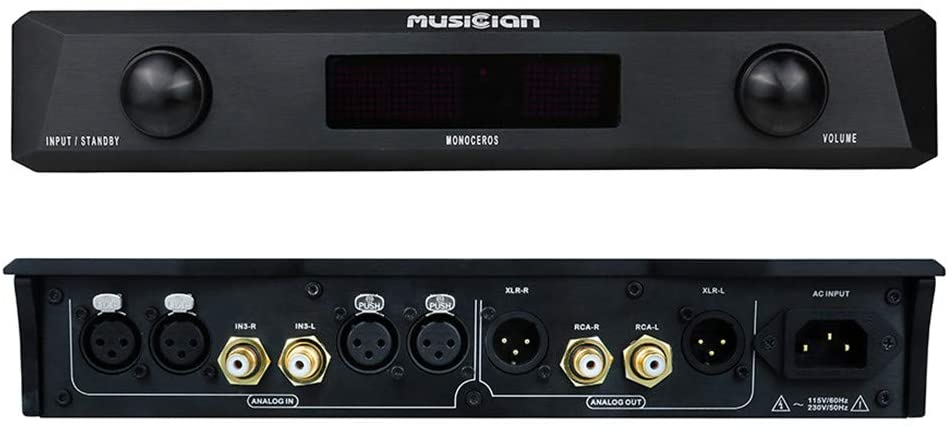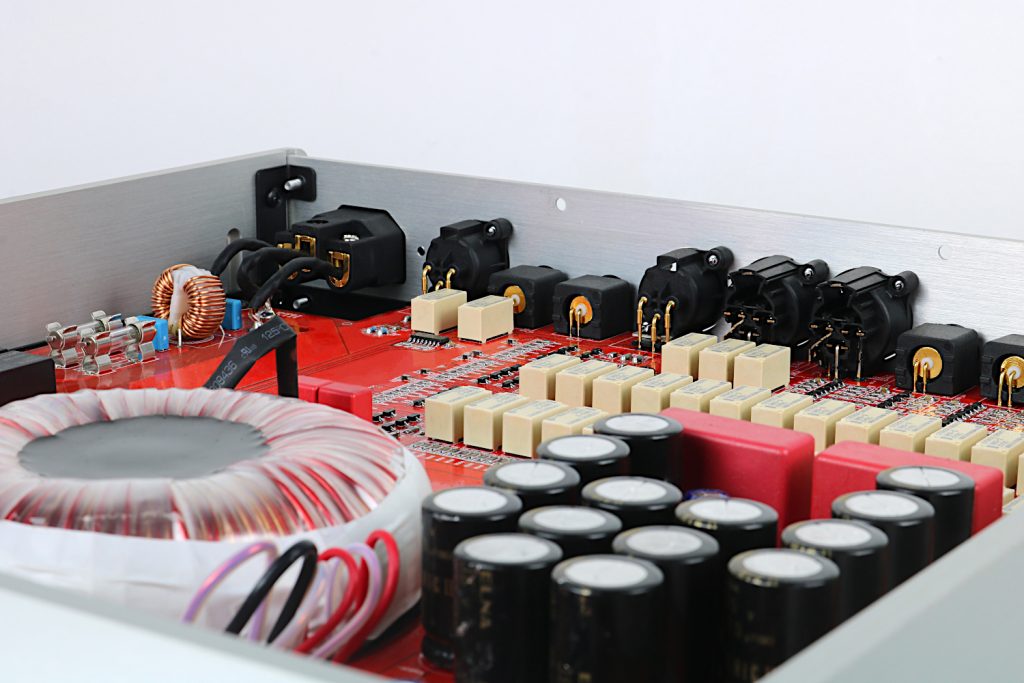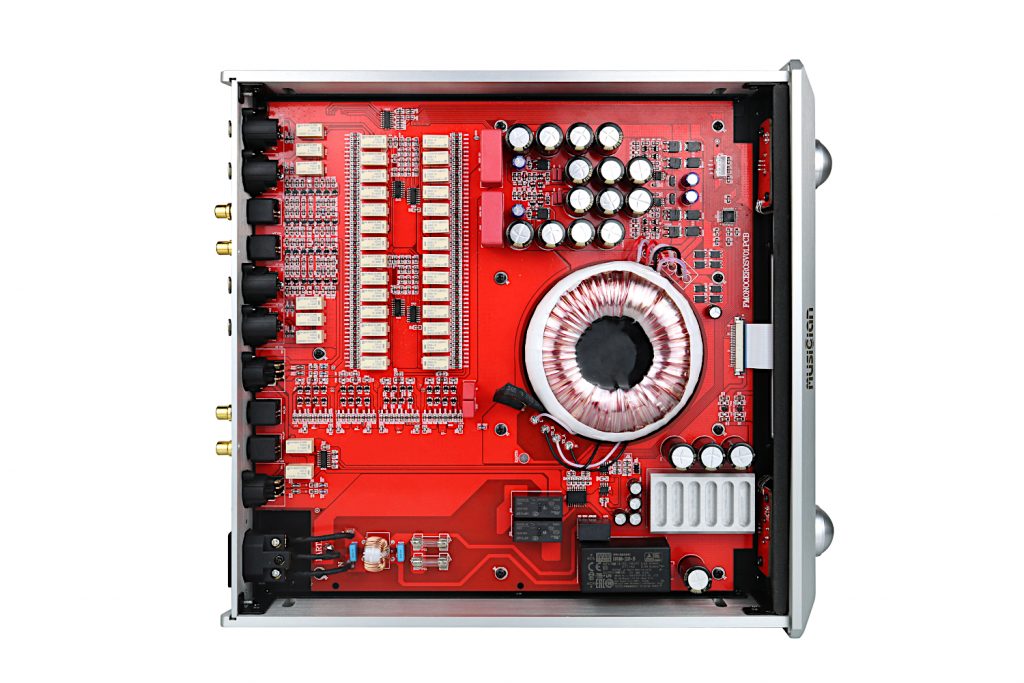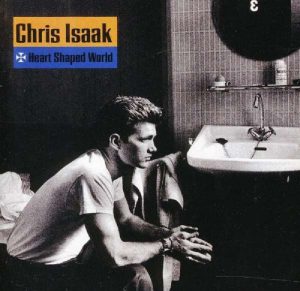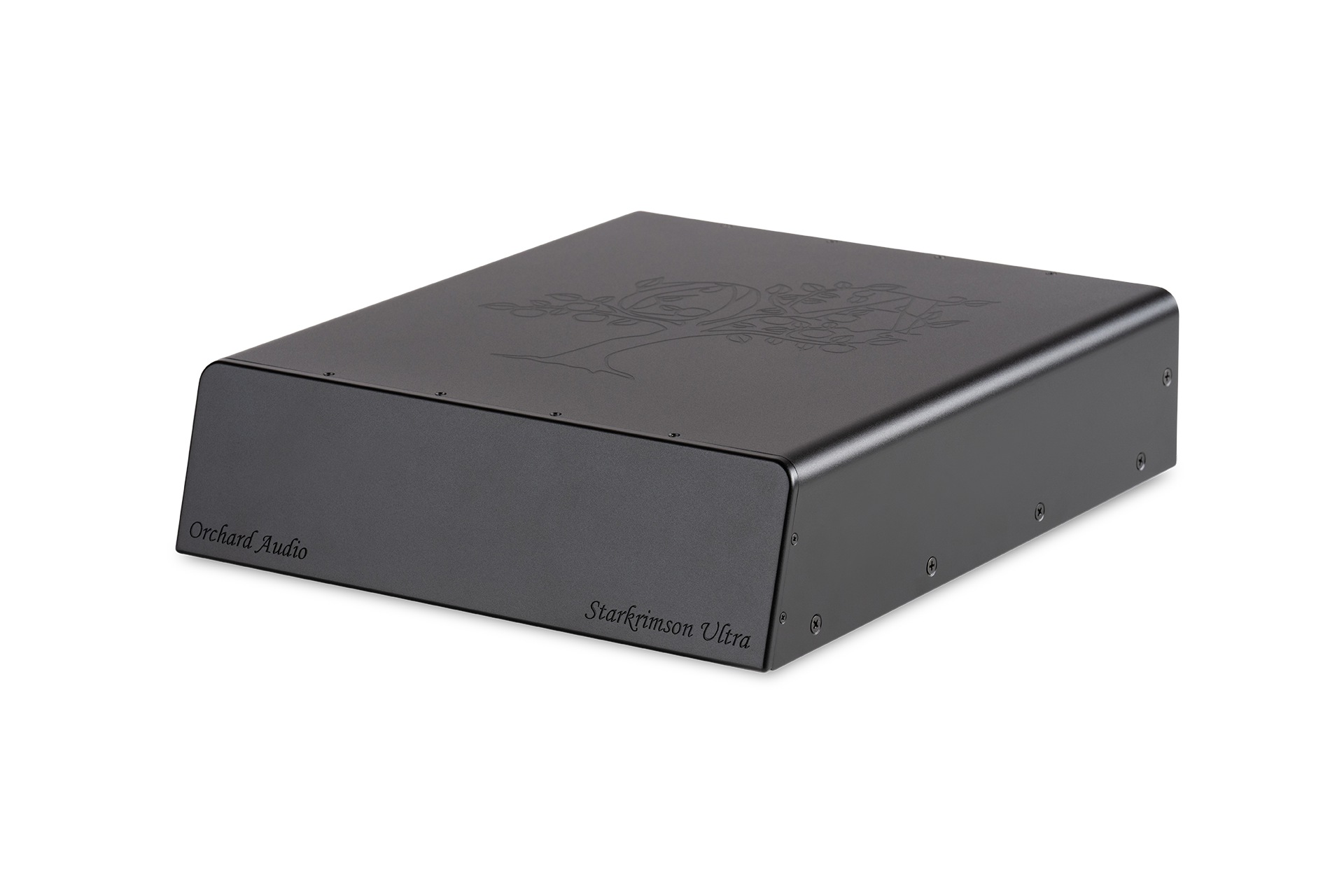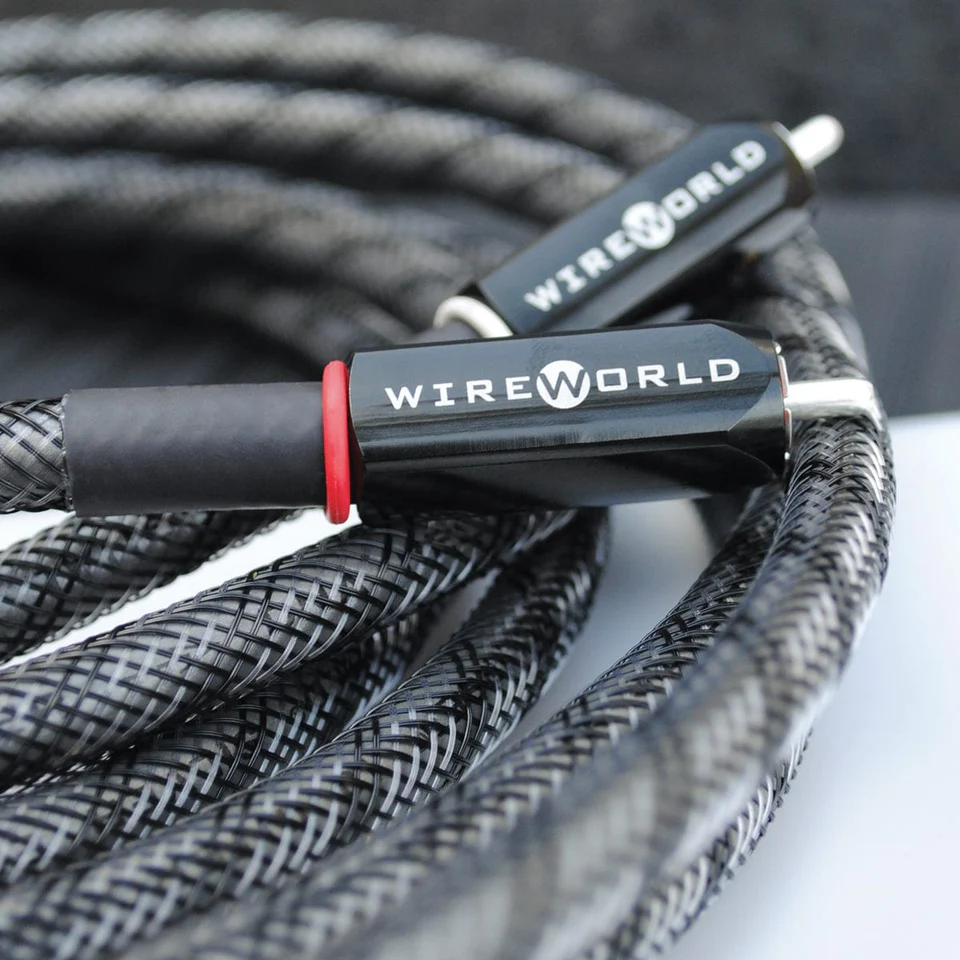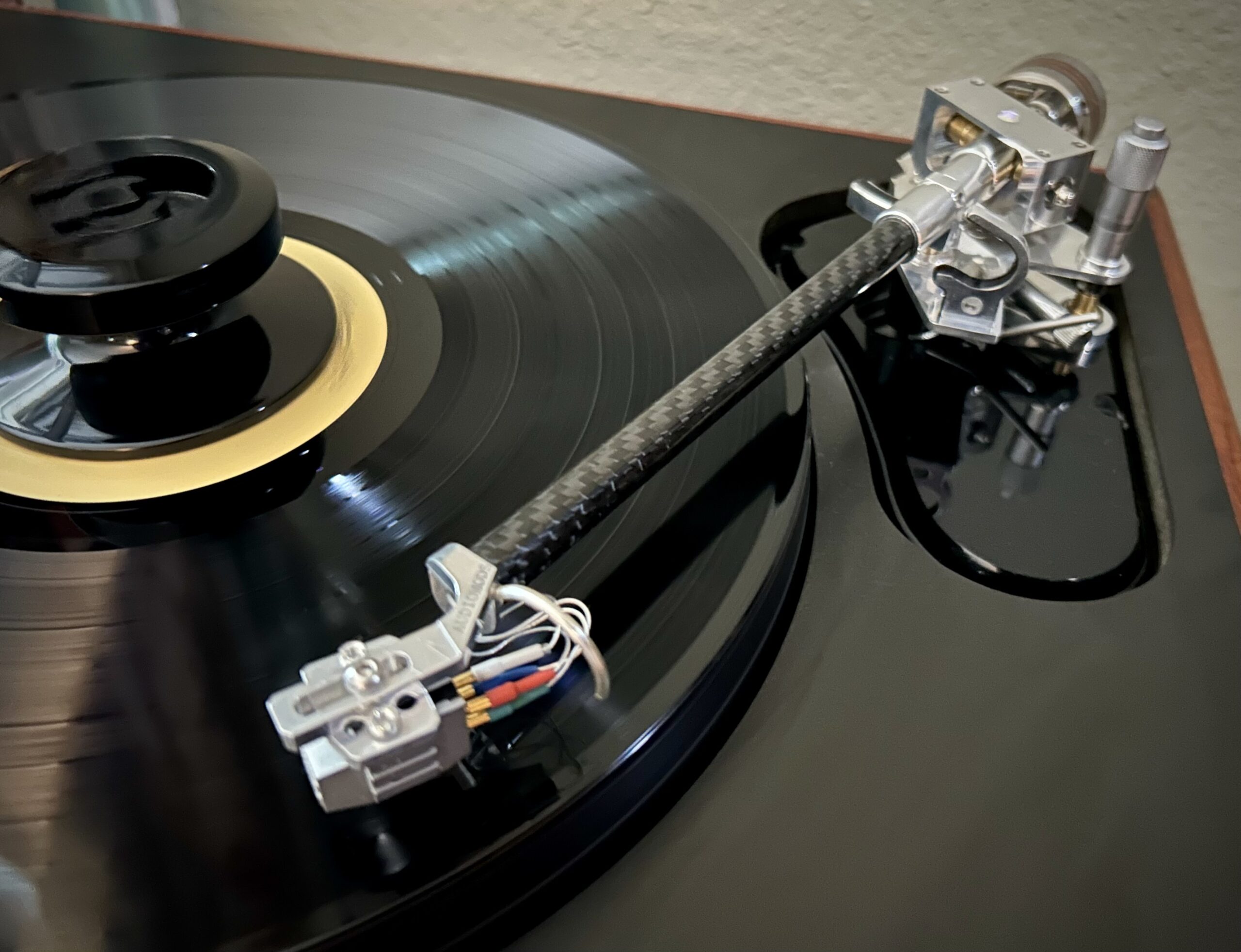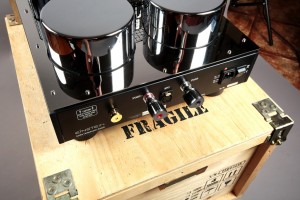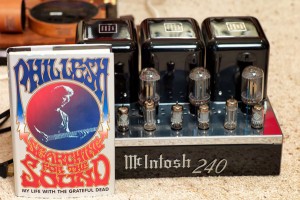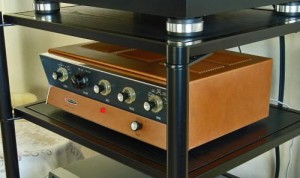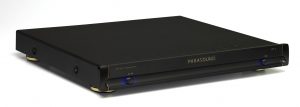Thick aluminum casing, a dark anodized finish, microprocessor-controlled functions, and mysterious red lights on the faceplate could describe the latest generation of Cylon Centurion from the Battlestar Galactica science fiction series, or the newly released Monoceros preamplifier from Musician Audio. While Cylons are a Hollywood creation, this preamplifier (linestage) is the real deal, and is a showcase component that exemplifies what serious audio companies from East Asia are capable of.
A new generation of audio manufacturing has emerged from this geographical region, and in the digital realm companies such as Topping, Gustard, and SMSL are recognized by audiophiles for offering quality products with excellent sonic performance at affordable price points. Musician Audio Technology is an innovative company that is garnering a great deal of attention from discerning audiophiles for the Pegasus R2R digital to analog converter. Building on this successful start Musician Audio has released the Monoceros preamplifier, and I am fortunate enough to obtain one for an extended evaluation period.
Arthur Power is the owner of Power Holdings Inc and is the North American distributor for Musician Audio. When finalizing arrangements to return the Violectric HPA 550 PRO headphone amplifier to Power Holdings, Arthur was kind enough to send out a Monoceros so that Positive Feedback readers can be introduced to this superb preamplifier. The Monoceros is a three-quarter sized component that has devastatingly good looks due to an enclosure that is CNC milled from aircraft aluminum alloy.
The preamplifier remote control is machined from a single piece of aluminum and accesses all the functions of the Monoceros as well as the Musician Audio music server. First impressions of this preamplifier are positive, as the fit and finish and quality of materials are far more refined than one would expect. The current MSRP is $1169.95, which I feel is a bargain given the quality of workmanship and the overall sonic performance of this preamplifier.
The Monoceros preamplifier is a balanced Class A circuit that utilizes discrete components throughout the design. The power supply is anchored by a 60-watt single crystal copper wire transformer which feeds a high-speed parallel power supply circuit. The preamplifiers audio circuit is a balanced design and is optimized for extended frequency response along with a low noise floor. A 60-step relay-controlled resistor network provides precise volume control, which maintains a constant output impedance and proper channel balance. The Monoceros is a line-stage only design, so those who imbibe in the black licorice we call vinyl will need to bring their own phono stage.
Input jacks are two sets of balanced XLR ports, and one pair of RCA jacks. Connection to the amplifier is achieved through one pair of XLR or RCA jacks, and both can be used simultaneously. This may be of importance to perspective owners who use sub-woofers, as this allows for an uncomplicated installation. The display is a large red LED configuration that is easy to read and has this retro vibe that reminds me of classic Jeff Rowland products that I have owned in the past.
As impressive as the build quality is for the Musician Audio preamplifier is, what really matters is the sonic performance. For this evaluation I installed the Monoceros in place of a Halcro DM8 preamplifier. The Halcro is a reference level component, and a careful comparison of the abilities of the Musician Audio preamplifier will reveal how successful the design team is in realizing their goals. The XLR output jacks are wired to a pair of AVM Audio Amp Essential mono-blocks, while the RCA jacks are used to feed a pair of Velodyne HGS 12 servo subwoofers. Source components are an Audio Magic Kukama DAC with a Mac Mini server.
A SOTA Cosmos Eclipse turntable with SME V arm and Transfiguration Audio Proteus cartridge are paired with an Esoteric Audio E-03 phono stage. Cabling consists of Wireworld Eclipse 8 speaker wire and Silver Eclipse 8 interconnects. A TLP Audio TF130 power conditioner provides clean AC power through a set of PI Audio Group power cords. The Monoceros preamplifier went through a 100-hour break in process before critical listening sessions started.
The Monoceros preamplifier has a refined tonal balance and an expressive presentation of music that belies its affordable price tag. Throughout my listening sessions this preamplifier is remarkably balanced and even keeled, with just the slightest emphasis in the upper midrange region that infuses the lightest shade of presence to the music. While the Halcro DM8 that I use as a reference component is utterly transparent, it is surprising how the Musician Audio components can trace a similar pathway.
Listening to "Lou's Blues" by Lou Donaldson (The Time Is Right; Blue Note ST-84025) my attention was riveted on the spirited saxophone passages, as the driving energy of this opening cut is undeniable. The trumpet line has a burnished warmth and silky-smooth texture. The opening bongos have crystalline clarity, with a realistic harmonic decay pattern. Now this slight emphasis in the upper midrange band adds a touch of magic to these instruments, and while this enhancement is a deviation to the story presented by the musicians, but in the end who does not appreciate a well told story with a dab of embellishment to highlight the drama and suspense? I will say that the Monoceros is an adept storyteller that will command the attention of its audience with its ability to present music in a luxurious manner that would garner the interest of the most experienced audiophile.
The bass response of Monceros preamplifier is impressive, as the lower registers are robust, tuneful, and wonderfully textured. The electric bass line in "Dreams" (Rumours; Reprise 517787-1) by Fleetwood Mac is bouncy and deliciously rounded in a way that draws the listener in and demands to be heard. I will confess to Dreams being one of my favorite songs, and when I listen to it through this preamplifier, I feel the presentation is fundamentally correct as the music just feels undeniably right.
Switching gears to an acoustic bass as used in "Temptation" (Temptation, Metro Blue 31653 2 2) by The Holy Cole Trio, and I am equally impressed by the Monceros capabilities in the bass region. The acoustic bass is visceral and primal, with superb tone and perfect decay of notes. The bass drum is authentic in tone also, with a shimmer to each strike of the beater. I am thoroughly enamored with a preamplifier at this price point's ability when asked to play demanding musical material with complicated bass passages, and I can find no meaningful fault in what I have heard during my listening sessions.
As I previously mentioned there is a slight emphasis in the upper midrange region, and while pleasant there are times where it is noticeable with vocals. With male singers who are often located in lower registers this effect is virtually unnoticed. In "Blue Spanish Sky" (Heart Shaped World, Reprise Records 4-25837) by Chris Isaak I barely notice this effect, however, the slight lift imparted by the preamplifier enhances the image of Isaak in my listening room.
With female artists this addition can be a distraction, creating an elevated presence to certain types of vocalists. When listening to a dark and sultry singer such as Suzanne Vega this continues to not be an issue, however, if your tastes run to performers with a voice such as Lisa Loeb then I suspect you might take notice of this stylistic alteration. With a careful selection of cabling and associated components this effect can be minimized, and it becomes barely noticeable. For instance, I found a synergistic pairing between this component and Wireworld Silver Eclipse interconnects, and I would suspect that offerings from Cardas, Tara Labs, and Analysis Plus would also be excellent choices.
The song, "Journey to Lhasa" (House of Sleeping Beauties, Private Music AL-1601) by Lucia Hwong, is an expansive song that challenges the Monoceros preamplifier's ability to present an expansive acoustic space. Spatial representation is an area where the Halcro DM8 preamplifier excels at, so it is no surprise that it distances itself from this jaunty preamp with aspirations of greatness. Although I will say I am quite pleased with how well the Musician Audio preamplifier acquits itself in this comparison given the degree of excellence the Halcro imparts. The Monoceros forms fully fleshed out images in a solid three-dimensional space. The height and width of the soundstage is respectable, especially given the affordable price of this component. Ethereal vocals float across the back of the venue in an otherworldly manner, giving the song a mystical aura.
The two regions I found to be limitations in is the depth of the image, and the width of the soundstage. The Monoceros preamplifier creates an acceptable level of depth to the recording, and when compared to its peers I believe it finishes towards the head of the class. However, when compared against the Halcro, the shallower soundstage becomes noticeable, and it is easy to identify the differences between these two components. To maximize the focus of performers and instruments within the soundstage I found It necessary to increase the angle of speaker toe in when the Monoceros was installed, which tends to pull in the edges of the recording and create a more compact soundstage.
I experimented with various power cords I had on hand and found I could improve the presentation of acoustic space with a cable that is a synergistic match. In the end a PI Audio Group power cord allowed the Monoceros to achieve a delicate balance of tonal accuracy, dynamic contrasts, and spatial definition, whereas a Wireworld Silver Eclipse cord resulted in an overly aggressive midrange presentation. What I find encouraging is that when given carefully selected associated components and accessories the Musician Audio preamplifier can achieve a level of performance that unerringly draws a listener into the music.
From just a glance the Musician Audio Monoceros preamplifier has dashingly good looks. During my time with this preamplifier, I was able to allow my audiophile friends the chance to touch and hold this preamplifier, to run the controls, and look at the quality of the connection ports on the back of the unit. And none of them came remotely close to guessing what the selling price of this preamplifier. Everyone ventured a price in the $2500 range or higher, and each were genuinely surprised when I told them it could be theirs for under $1200.
The substantial aluminum case with its refined fit and finish is reminiscent of a multi thousand-dollar component, and the 60-step relay is not a feature you would expect to see on an affordable component. The layout and design of the internal boards is impressive, and the quality of parts alludes to the commitment of Musician Audio to offer a high-end product. The LED display may have a retro style presentation, but I will say it is easy to read, which is I find to be a positive benefit. Personally, I would like to see one more pair of RCA inputs, but that is my only quibble with this preamplifier.
From a musical perspective this is an outstanding preamplifier. The Monoceros preamplifier is refined, expressive, powerful, and engaging, and I believe most audiophiles could build a fine audio system with this piece. The affordable nature of the Monoceros means that music lovers of all walks of life, have the financial means to enjoy this piece.
If you get an opportunity to listen to the Monoceros, I recommend you make the effort. I would venture to guess that Arthur Power is going to be busy filling orders, because this preamplifier should be at the top of the list for value conscious audiophiles, well heck, anyone who enjoys hearing high quality audio playback. Give the Monoceros a listen, I do not believe you will be disappointed.
Monoceros Preamplifier
Retail: $1169.99
Musician Audio
North American Distributor
Power Holdings Inc
https://power-holdings-inc.com/




